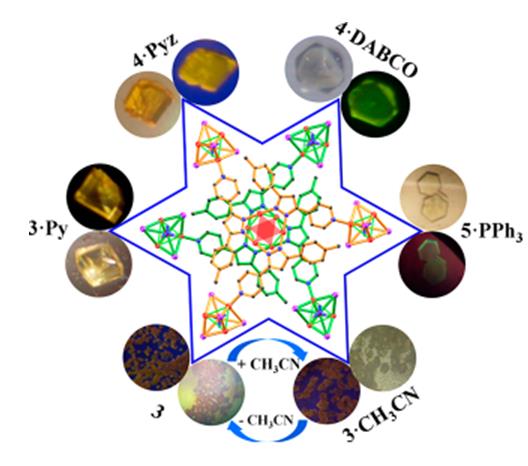
Shun-Ze Zhan,* Mian Li, Ji Zheng, Qiu-Juan Wang, Seik Weng Ng, and Dan Li*

Abstract: Six daughter complexes based on two-dimensional (2-D) luminescent Cu4I4−Cu3Pz3 (Pz = pyrazolate) coordination networks, which exhibit an uncommon Cu4I4L3L′ (L = pyridine; L′ = acetonitrile, pyridine, pyrazine, 1,4-diazabicyclo[2.2.2]octane, triphenylphosphine, none) local configuration, were prepared through a postsynthetic modification method starting from a parent complex (L′ = NH3). This work has successfully implemented the single-site substitution of Cu4I4-based coordination frameworks, which have rarely been eported for isolated Cu4I4-type compounds, by taking advantage of the solventassisted ligand substitution strategy recently developed in metal−organic framework (MOF) chemistry. Such a procedure not only resulted in the variation of local geometry in the Cu4I4 units but also led to interlayer network displacement and entanglement. Particularly, an interesting topological transformation (from 2-D to 2-D → 3-D interpenetration) occurred when linear bidentate linkers (e.g., pyrazine and 1,4-diazabicyclo[2.2.2]octane) are inserted between the 2-D layers. Moreover, the variation in the L′ sites can effectively tune the emission colors, ranging from green to orange (λem max 540−605 nm at room temperature). The photoluminescence origins are tentatively assigned to be a mixture of 3MLCT and 3XLCT, different from that of the well-studied isolated Cu4I4-type complexes.
文章链接:![]() acs.inorgchem.7b02144.pdf
acs.inorgchem.7b02144.pdf




